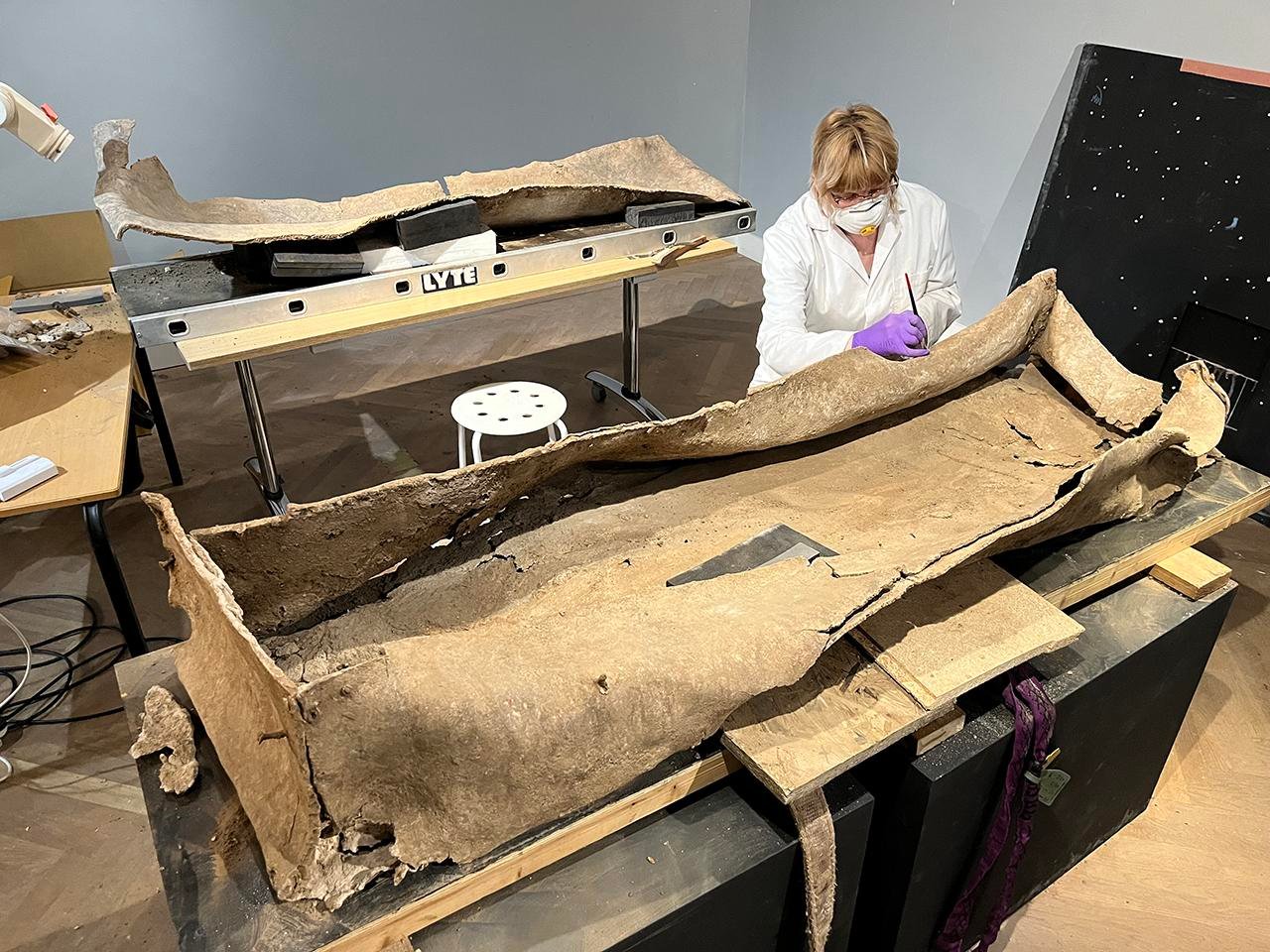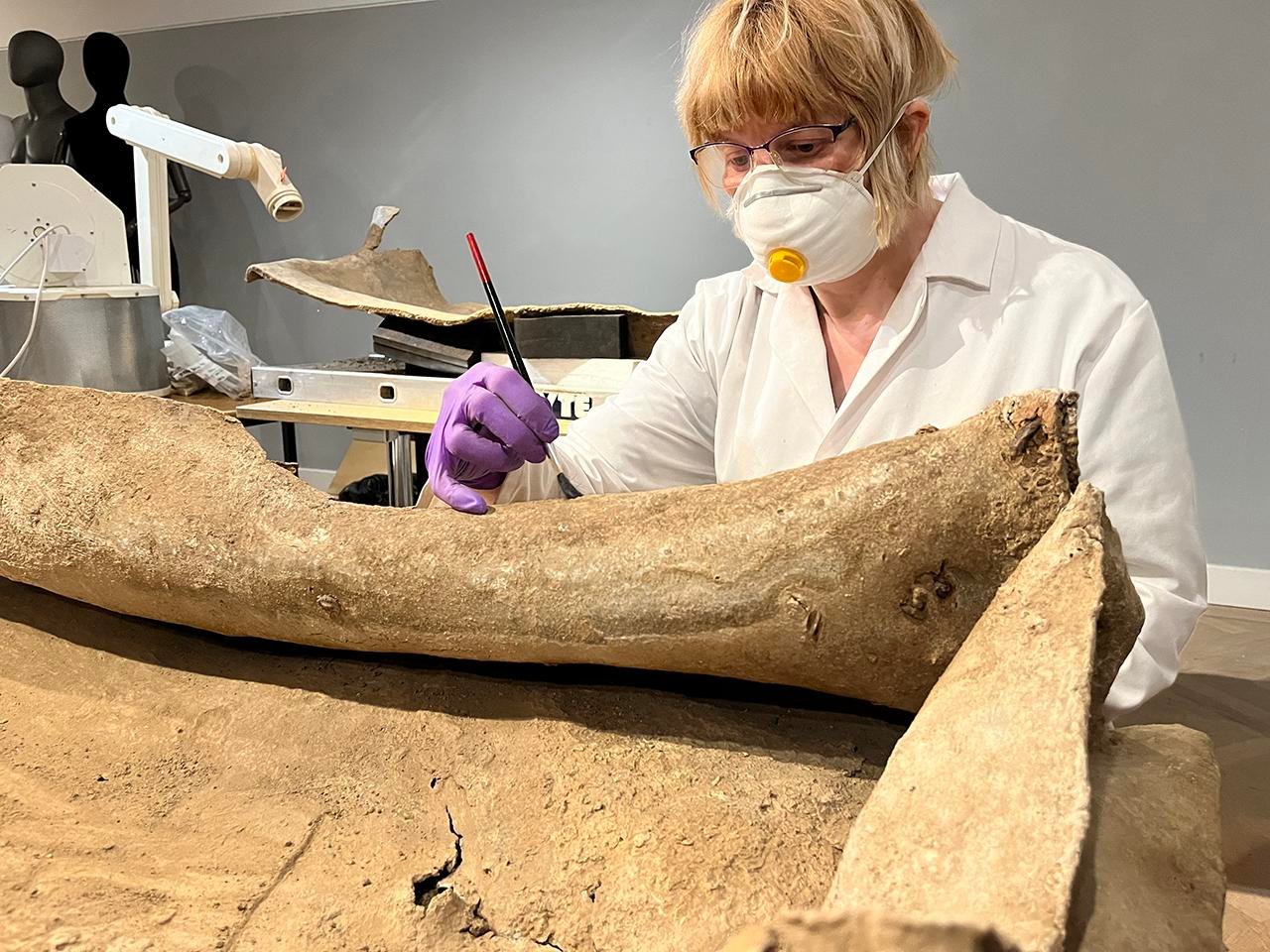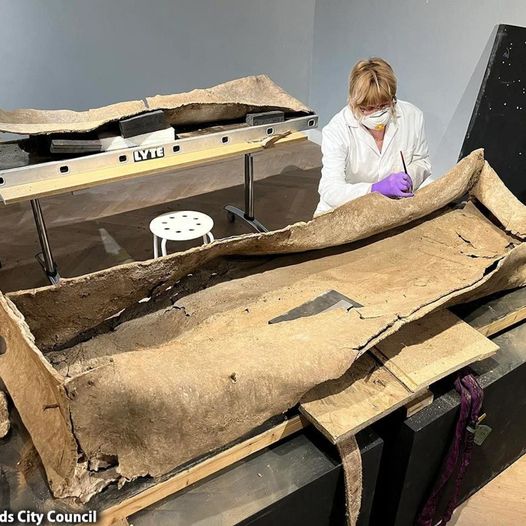Archaeologists in Leeds, West Yorkshire, have made a remarkable discovery that is shedding new light on the lives and deaths of people who inhabited the region over 16 centuries ago. The unearthing of a well-preserved lead coffin from the Roman era has captivated historians and the public alike, raising intriguing questions about the individuals laid to rest within.
This blog post will delve into the details of this exceptional find, explore the insights it provides into the customs and social structures of ancient Leeds, and discuss the upcoming “Living with Death” exhibition that will showcase this remarkable artifact and the broader story it tells about mortality and human experience.
The Discovery of the Lead Coffin

The lead coffin was uncovered during excavations in the metropolitan district of Leeds, a city with a rich historical heritage. Experts from the West Yorkshire Archaeological Services were the first to examine the coffin, quickly recognizing its significance as a rare and well-preserved relic from the Roman period.
Initial assessments revealed that the primary occupant of the coffin was a woman between the ages of 25 and 35, who was believed to have held a high social status, potentially even that of an aristocrat, during the Roman occupation of Britain. This conclusion was drawn from the adornments found alongside her remains, including a bracelet, a glass bead necklace, and a finger ring or earring – all indicators of her elevated standing within her community.
However, the analysis of the coffin’s contents took an unexpected turn when researchers discovered the partial remains of an unknown child, approximately 10 years old at the time of death. This unexpected discovery highlighted the complexity of the burial and the potential relationships between the two individuals interred together.
Unraveling the Mysteries of the Dual Burial

The presence of the child’s remains alongside the adult woman has raised intriguing questions about the nature of their relationship and the circumstances surrounding their burials. While the exact connection between the two individuals remains a mystery, carbon dating has shown that their burials occurred around the same period.
Stuart Robinson, speaking on behalf of Leeds City Council, acknowledged the uncertainty surrounding the relationship between the child and the woman, but emphasized the significance of their shared resting place. The discovery of the child’s remains, initially overlooked due to the fragmented nature of the bones, adds an additional layer of complexity to the story.
The lead coffin itself is a rare find in West Yorkshire, further enhancing the significance of this archaeological treasure. Lead coffins were not commonly used in the region during the Roman era, making this discovery all the more remarkable and offering a unique glimpse into the burial practices and social dynamics of the time.
Preserving the Past, Engaging the Present

The lead coffin is currently undergoing extensive conservation efforts to stabilize its delicate condition, ensuring its long-term preservation for future generations. Plans are in place to display the coffin at the Leeds City Museum as part of the upcoming “Living with Death” exhibition, which aims to explore diverse cultural approaches to death, dying, and bereavement.
Kat Baxter, curator of archaeology at Leeds Museums and Galleries, highlighted the immense potential of this discovery, stating that it has “potentially huge implications for our understanding of the history of early Leeds and those who made their home here.” The discovery of the child’s remains has added an intriguing layer to the story, raising questions about the social and familial structures of the time.
Councillor Jonathan Pryor, deputy leader of Leeds City Council, emphasized the exhibition’s goal of sparking conversations and fostering understanding across cultures. By showcasing the lead coffin and the insights it provides into the lives and deaths of ancient Leeds residents, the “Living with Death” exhibition aims to engage the public and encourage a deeper appreciation for the diverse perspectives on mortality that have shaped human experience throughout history.
Uncovering the Broader Story

The excavation that yielded the lead coffin has also produced the remains of over 60 individuals from both the late Roman and early medieval periods. These additional findings offer a more comprehensive understanding of the past communities that inhabited the Leeds region and their customs surrounding death and burial.
The “Living with Death” exhibition will feature a range of exhibits exploring these diverse cultural perspectives on mortality, accompanied by talks, workshops, and family-friendly events that will further enrich the public’s understanding of this remarkable chapter in Leeds’ history.
Conclusion
The discovery of the 1,600-year-old lead coffin in Leeds has captivated historians and the public alike, providing a unique window into the lives and deaths of the individuals who once called this region home. The presence of the adult woman and the child’s remains within the coffin has raised intriguing questions about the social structures and familial relationships of the time, sparking a deeper appreciation for the complexities of human experience throughout history.
As the “Living with Death” exhibition prepares to unveil this extraordinary artifact and the broader story it represents, the people of Leeds and beyond will have the opportunity to engage with the past in a meaningful way, fostering a greater understanding of the diverse cultural approaches to mortality that have shaped the human journey. This remarkable discovery serves as a testament to the power of archaeology to uncover the hidden stories that lie beneath the surface, enriching our understanding of the past and its enduring relevance to the present.
